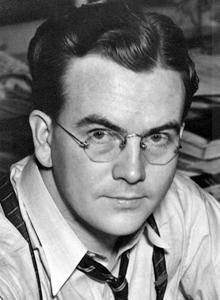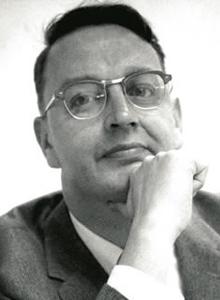Since the founding of the Will Eisner Comic Industry Awards (and their previous incarnation, the Kirby Awards), the following individuals have been inducted into the Hall of Fame.

Milton Caniff
1907–1988
A pioneer in the action/adventure comic strip, Milton Caniff influence generations of artists with his storytelling and chiaroscuro art on Terry and the Pirates. He also set precedent by leaving Terry to create a strip that he could own himself: Steve Canyon.
Inducted 1988

Al Capp
1909–1979
Cartoonist Al Capp added to American pop culture and our language through his clever and popular newspaper strip Li’l Abner, which ran for 43 years. Capp delighted funnypapers fans with his creations: the Yokum family of Dogpatch, U.S.A., the Schmoo, Sadie Hawkins Day, Kickapoo Joy Juice, Joe Bfstplk, Fearless Fosdick, Lower Slobbovia, and much, much more.
Inducted 2004

Nick Cardy
1920–2013
Nick Cardy began in comics in 1939 at the Eisner/Iger Studio. He then joined Will Eisner at his Tudor City Studio to draw “Lady Luck,” among other assignments. In the 1960s Nick he had long and influential runs on Aquaman and then Teen Titans. In 1969 he drew the short-lived but highly regarded Bat Lash series. In the early 1970s he drew a number of popular stories for Brave & the Bold and was the chief cover artist for DC, drawing numerous covers for Superman, Action Comics, Flash, Secret Origins, The Witching Hour, and many more titles.
Inducted 2005

Howard Chaykin
1950–
After working as an assistant for the likes of Gil Kane, Wally Wood, Neal Adams, and Gray Morrow, in the early 1970s Howard Chaykin became a freelancer for such publishers as Marvel, DC, Warren, and Heavy Metal. In 1974, he created “Cody Starbuck” for Star*Reach. Chaykin pioneered the graphic novel with Alfred Bester’s The Stars My Destination and Samuel R. Delaney’s Empire, among others. In 1977, prior to the movies, he drew the first Star Wars comics with scripts by Roy Thomas. In 1983, he created the hit series American Flagg! at First Comics. His 1980s output included Black Kiss (Vortex), The Shadow and Blackhawk (DC) and his postmodern graphic novel Time2 at First. Subsequent projects have included Twilight, Power and Glory, American Century, Mighty Love, The Divided States of Hysteria, and Hey, Kids! Comics!
Inducted 2022

Chris Claremont
1950–
Writer Chris Claremont is well known for his 17-year run on Uncanny X-Men, for which he created or co-created such characters as Rogue, Phoenix, Mystique, Sabretooth, and Gambit. His story arcs in collaboration with John Byrne included such classics as “Dark Phoenix” and “Days of Future Past.” His Wolverine minseries with artist Frank Miller inspired the storyline for the 2013 film The Wolverine. The 1991 X-Men #1 spinoff issue, which Claremont co-wrote with Jim Lee, remains the bestselling comic book of all time. In the 1990s Claremont wrote a variety of titles for several publishers, including his own Sovereign Seven for DC, as well as some prose novels. He returned to Marvel in 1998 as editorial director and the regular writer of Fantastic Four. Today he continues to write novels and to work for Marvel, writing such titles as X-Women and Nightcrawler.
Inducted 2015

Dave Cockrum
1943–2006
Comics artist Dave Cockrum was known for his inventive costume designs. A prolific fanzine artist, he began his professional career in 1971 doing work for Warren Publishing, followed in 1972 by the Western strip “Shattuck” for Wally Wood. He soon found inking work as Murphy Anderson’s assistant on DC’s Superman and Superboy titles and then became the artist on the “Legion of Super-Heroes” feature. After he left DC for Marvel, he and Len Wein co-created the new X-Men, including such characters as Storm, Nightcrawler, and Colossus. He also co-created the Spider-Man character Black Cat with Marv Wolfman. Cockrum left a staff position at Marvel in 1979 but continued to freelance for Marvel, DC, and other companies, which included a return to the X-Men in 1981. He produced his own title, The Futurians, in 1983, first for Marvel, then published by Lodestone/Deluxe, where he also worked on the mid-80s revival of T.H.U.N.D.E.R. Agents. From 1995 to 2000, he was the regular artist on Soulsearchers and Company for Claypool Comics.
Inducted 2021

Gene Colan
1926–2011
Gene Colan began working in comics in 1944. He came into prominence in the 1960s as part of the Marvel Silver Age crew, drawing Daredevil, Dr. Strange, Sub-Mariner, Captain America, and other titles before going on to famed runs on Tomb of Dracula and Howard the Duck. In the 1980s, Gene worked on a number of titles at DC, including Night Force and Nathaniel Dusk.
Inducted 2005

L.B. Cole
1926–2011
One of the most versatile cover artists in the history of comics, Leonard Brandt Cole worked in a wide range of styles and in just about every genre, from funny animals to romance to war as well as science fiction and horror. His striking colors and appealing (if sometimes bizarre) designs have made Golden Age comics with his covers highly collectible.
Inducted 1999

Jack Cole
1918–1958
Jack Cole was one of the most innovative cartoonists in the history of comics. In addition to creating Plastic Man, he gave a distinctive look to superhero, crime, and horror series for Harry A. Chesler, Busy Arnold, MLJ, and other Golden Age publishers. He eventually left comics in the early 1950s to draw “Females by Cole” for Playboy, and a syndicated comic strip, Betsy and Me.
Inducted 1999

Richard Corben
1940–2020
In the late 1960s Richard Corben published his own underground comic book, Fantagor, and contributed to the underground magazines Slow Death and Skull. In the 1970s he drew regularly for Eerie, Creepy, and Vampirella. But it was his color stories in Heavy Metal that brought him a huge fan following, with such series as “Bloodstar,” “Mutantworld,” and “Den.” Since then he had done work for Marvel, DC, IDW, and most notably Dark Horse, drawing the Eisner Award–winning Hellboy.
Inducted 2012

Johnny Craig
1926–2001
Johnny Craig is best known for his work on the horror and crime titles at EC Comics in the late 1940s and early 1950s. Although he created some of the most notorious and gory covers for such titles as Vault of Horror and Crime Suspenstories, aficionados laud him for this well-crafted crime stories, which he both wrote and drew, in Shock Suspenstories, Crime Suspenstories, and Extra.
Inducted 2005

Reed Crandall
1917–1982
Reed Crandall started with the Eisner/Iger Studio, where he worked primarily on titles for Quality Comics, including Hit, Crack, Smash, and Uncle Sam (which became Blackhawk), where he drew such features as “The Ray,” “Dollman,” and “Firebrand.” In the late 1940s Crandall began working at EC, drawing everything from horror and suspense to science fiction. In the 1960s he produced a series of highly acclaimed stories for Warren’s Creepy and Eerie.
Inducted 2009

Roy Crane
1901–1977
Roy Crane was a major innovator of the adventure strip with his creations Wash Tubbs, Captain Easy, and Buz Sawyer. His use of chiaroscuro and his storytelling techniques have influenced countless artists in both comics strips and comic books. Eerie.
Inducted 2001

R. Crumb
1943–
Immortalized in the film Crumb, the legendary underground cartoonist Robert Crumb created lasting cultural icons in the form of Mr. Natural, Fritz the Cat, and “Keep on Truckin’.” Today he continues to turn out his idiosyncratic and beautifully drawn work from his home in France, which he shares with wife, cartoonist Aline Kominsky.
Inducted 1991

Howard Cruse
1944–2019
Howard Cruse first appeared on the national comics scene with his underground strip Barefootz in 1972. In 1979 he began editing Gay Comix, an anthology featuring comix by openly gay and lesbian cartoonists. In 1983 Cruse introduced his comic strip Wendel to the pages of The Advocate, the national gay newsmagazine, where it appeared regularly until 1989. His 1995 graphic novel Stuck Rubber Baby (published by Paradox Press) won Eisner and Harvey Awards and went on to be translated into numerous languages around the world; it was republished by Vertigo in 2010, and a 25th anniversary edition was published in 2020 by FirstSecond. Howard passed away in November 2019.
Inducted 2020